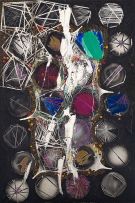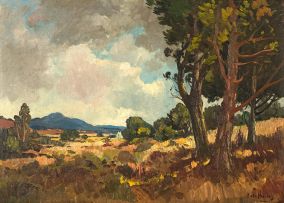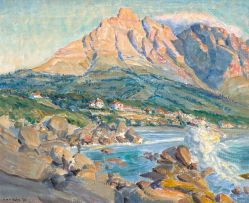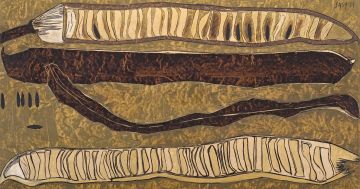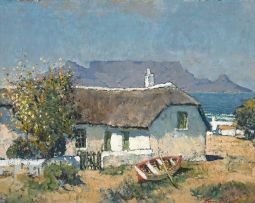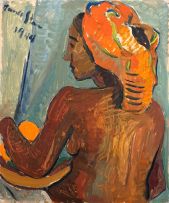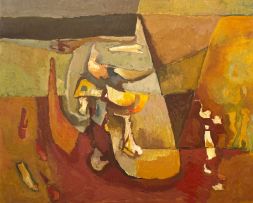Important South African and International Art, Decorative Arts & Jewellery
Live Auction, 15 October 2018
Art: Evening Session
Incl. Buyer's Premium & VAT
About this Item
signed, dated 'Paris April 64', inscribed with the title and '120 figure' on the reverse
Notes
A multitude of gyrating circles dominate the picture plane of Christo Coetzee's large-scale Collection of Storm Elements. Despite the fact that the date and place of this painting, April 64, Paris, locates it in Coetzee's Neo Baroque phase, of mainly works he painted in Paris after his return from a study visit to Japan in 1959/60, aligning himself with the famous post-war Japanese avant-garde group, the Gutai Art Association, the repetition of the circle motif in the present lot signifies what artist, art historian, curator, and close friend, Elza Miles calls Coetzee's 'Spanish essentialism'.1
Coetzee first visited Spain in 1951; later, in 1968, he settled in the mountain town of Finestrat near Valencia. What struck him the most about Spanish culture was its permanence, in such examples as Antoni Gaudí's architecture and the wealth of the Spanish 18th and 19th century painterly tradition to be found in the national museums. But Coetzee was equally fascinated by its fleeting nature, such as in the religious processions through the cities and villages, especially on Palm Sunday, and the annual Valencia Las Fallas ('the fires') fireworks festivals: Coetzee's Storm Elements could well be an explosion of brightly coloured phosphorus lights against a dark night sky.
The predominance of the circle in Coetzee's work had its origin in Hieronymus Bosch's famous painting, The Garden of Earthly Delights which he saw at the Prado in Madrid. Bosch's painting is essentially narrative in nature, telling of the fleetingness of human pleasure. Coetzee, on the other hand, is interested in some of the formal qualities of the Bosch painting, most importantly the many circular shapes in the work: glass balls, round fruits, bubbles, circles of people, various elliptical forms, and so on.
Bosch fixates on the temporary nature and the fragility of human pleasure and delight, while Coetzee depicts a multitude of worlds in constant orbit around their own axes and across the picture plane, many of them containing a triangular or trapezium form within its orb. These mathematical shapes lend an interesting structure and permanence to the otherwise fleeting firework displays suggested by the circles. Coetzee's ''Spanish essentialism'' resides in the combination of formal elements within one whole.
- Elza Miles (1975). 'Herbore werke van Coetzee na RAU-kampus' in Rapport. 18 May.

